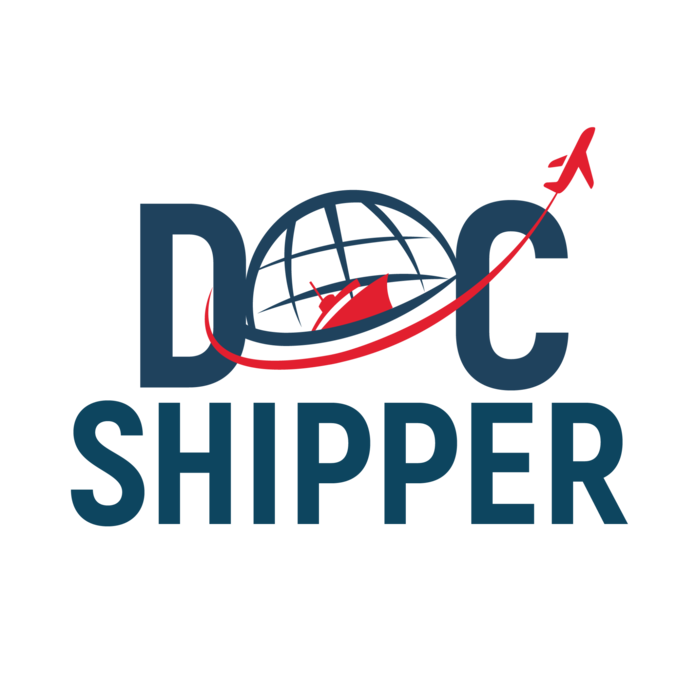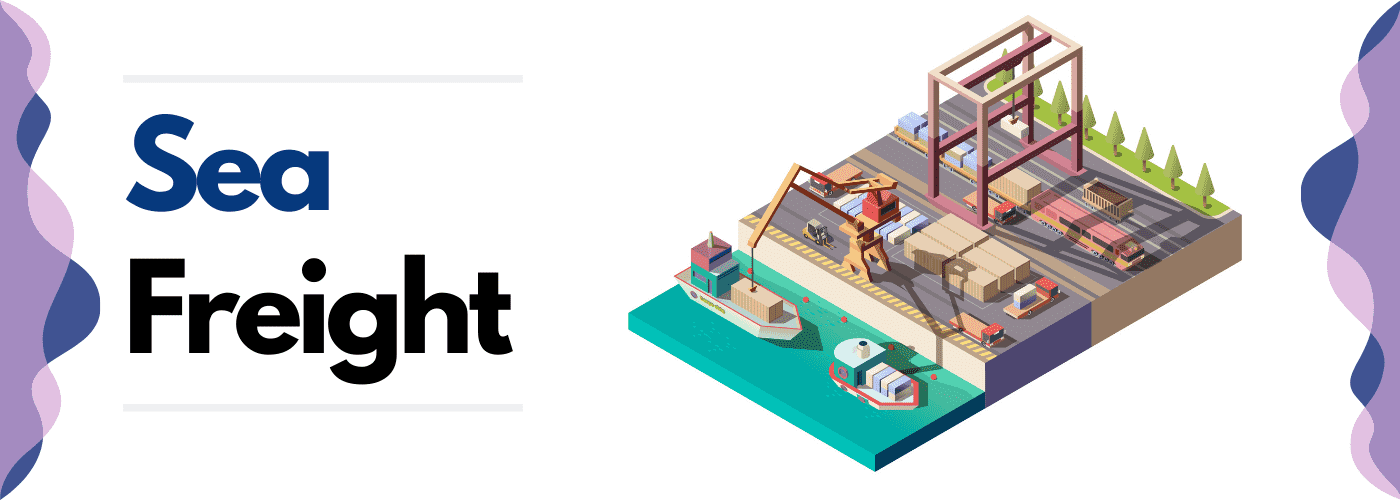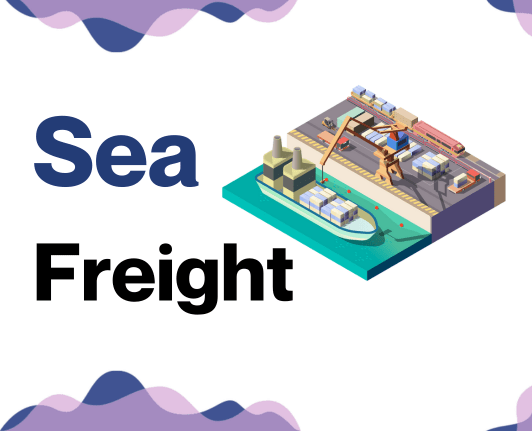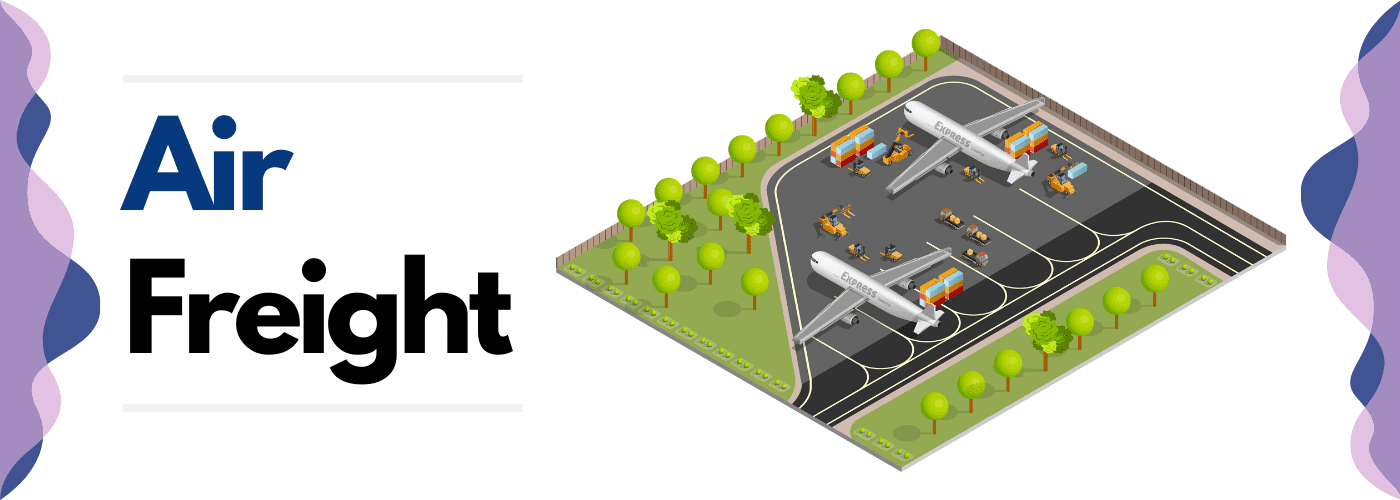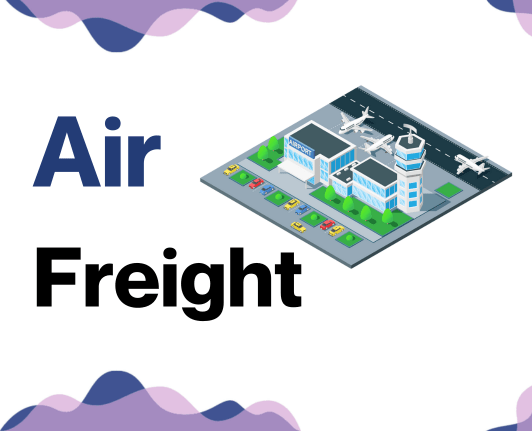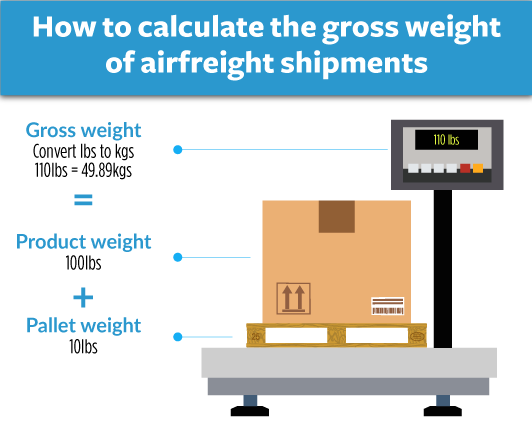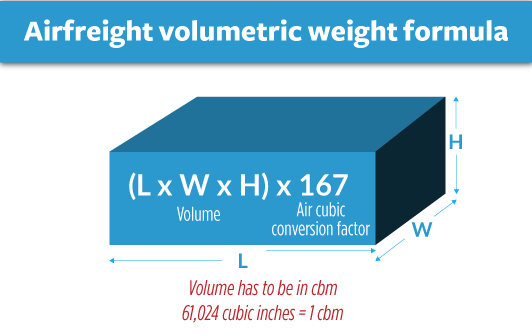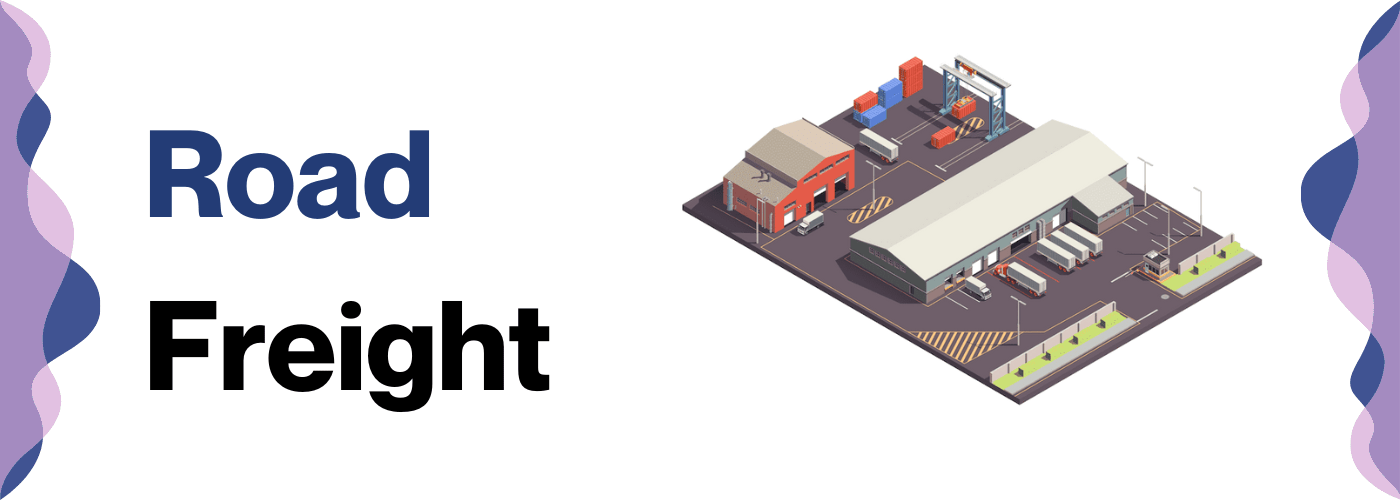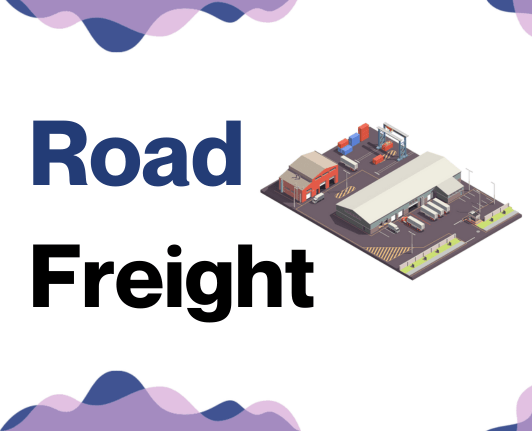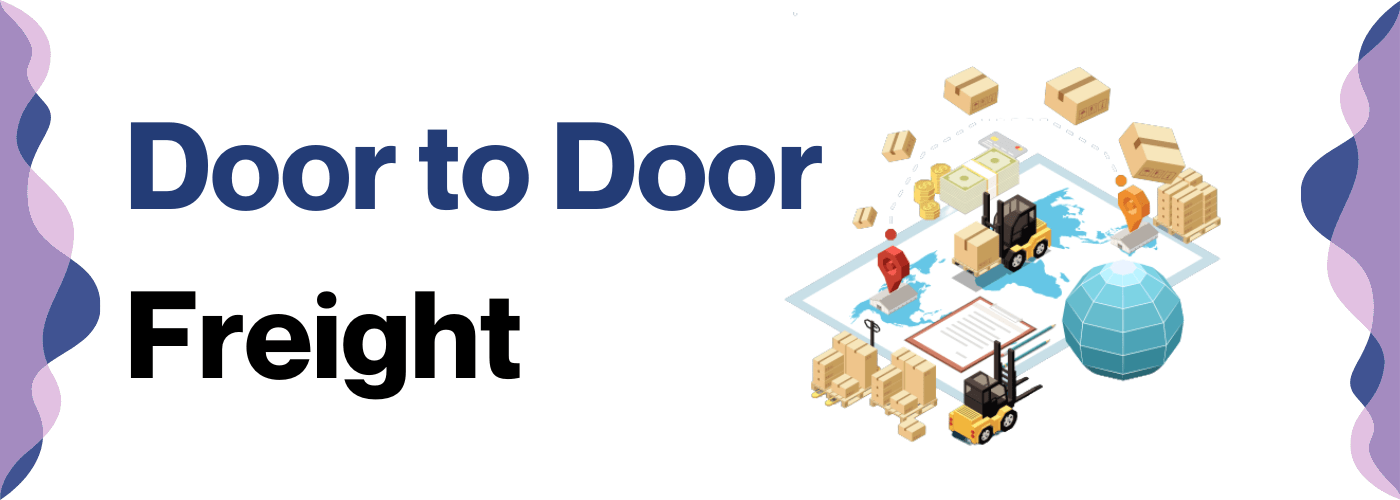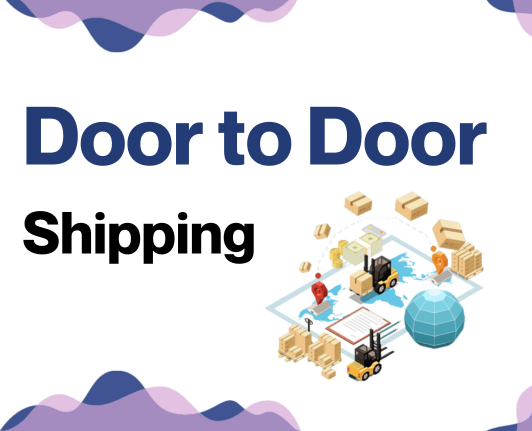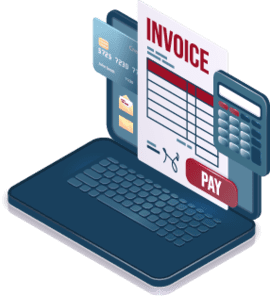Ever tried to understand freight transport between the UK and Denmark while reading a complex jigsaw puzzle's instructions? It might just feel the same! Understanding freight rates, transit times, and customs regulations can be quite a task, especially if you're doing it all for the first time. In this comprehensive guide, we will delve into various freight transport options that exist including air, sea, road, and rail - giving you a better understanding of what would suit your specific business needs. We'll elaborate on the intricacies of the customs clearance process, duties, taxes, and even share insider tips tailored just for businesses. If the process still feels overwhelming, let DocShipper handle it for you! Our team of experts are skilled at turning challenges into success, managing every meticulous detail of the freight process so you can focus on what you do best - running your business.
Table of Contents
Which are the different modes of transportation between UK and Denmark?
Choosing the best transport method between the UK and Denmark isn't a one-size-fits-all answer, it's more like picking the perfect pair of shoes. Each option has unique advantages. With the North Sea as your backyard, sea freight offers a straightforward route. On the other hand, road transport winds through a few neighbouring countries, yet it offers flexibility and speed. The choice all comes down to your cargo's size, weight, urgency, and your budget. Just as every foot deserves the right shoe, every shipment needs the right method of transport. Let's dive deep into these options and find your perfect fit.
How can DocShipper help?
Shipping goods between the UK and Denmark? Let DocShipper take the helm. With our end-to-end service, we'll handle every detail - from transport to customs. Streamline your logistics, save time and reduce stress. Ready to simplify your shipping? Our consultants await your call. Get a free estimate in less than 24 hours. Your bulletproof shipping solution is just a click away.
DocShipper Tip: Ocean freight might be the best solution for you if:
- You're dealing with large quantities or oversized items. Sea freight offers a budget-friendly way to maximize space, a particularly useful option given the UK's extensive port network.
- Your shipment isn't on a tight schedule. Ocean transport typically takes longer than air or rail, but it offers reliability.
- Your supply chain involves key ports, allowing you to take advantage of a wide-reaching network of sea lanes.
Sea freight between UK and Denmark
Toward the North, across the vast and frigid waters of the North Sea, lays the bustling economic artery connecting the United Kingdom and Denmark. Both nation's industrial might heavily relies on this pathway, with fleets of cargo ships regularly commuting between Southampton in the UK and Aarhus in Denmark. These giants of the sea bear the weight of high-volume goods, offering a refreshingly cost-effective shipping method, although admittedly, they might not win any races in speed.
Don't feel left adrift in high sea, though. Behind the scenes of this international waltz, many businesses face undulating waves of confusion and costly mistakes. It's like trying to solve a Rubik's cube in a snowstorm. But fear not - with the right compass of best practices and clear specifications, the seemingly overwhelming can become surprisingly manageable. In this guide, we'll chart a course to help your business navigate these waters with finesse. Bear in mind, every journey begins with a single step. Let's take that step together.
Main shipping ports in UK
Port of Felixstowe
Location and Volume: Located on the North Sea coast, the Port of Felixstowe holds the title as the UK's busiest container port, handling over 4 million TEUs per annum.
Key Trading Partners and Strategic Importance: Key trading partners include China, Europe, America, and other parts of Asia. Its positioned strategically, offering the shortest route between transport hubs in the UK and other major European ports.
Context for Businesses: If you're looking to potentially tap into the European and American markets, the Port of Felixstowe, with its direct access to the UK rail and road networks could help ensure smoother logistics flow.
Port of Southampton
Location and Volume: The Port of Southampton is a major port indicative of the Central South Coast of England, known for its large passenger terminal. It manages over 1.9 million TEUs annually.
Key Trading Partners and Strategic Importance: The Port of Southampton is critically linked with North America, Far East, Mediterranean, and other regions in Europe.
Context for Businesses: The Port, with its top-tier provision for vehicle trans-shipments, might particularly be of interest if you operate in the automotive industry, given its capacity to handle around 900,000 vehicles every year.
Port of London
Location and Volume: The Port of London stretches along the River Thames, ranked as the second-largest in the UK, supporting the handling of nearly 50 million tonnes of cargo annually.
Key Trading Partners and Strategic Importance: Its vital trading partners include North and South America, Africa, Asia, and Europe, catering to a diverse range of commodities such as containers, fuels, metals, and more.
Context for Businesses: If you have diverse shipping requirements, the Port of London with its capability to handle varied cargo types might serve as a robust link in your supply chain.
Port of Liverpool
Location and Volume: Situated on the Northwest coast, the Port of Liverpool boasts capacity to handle more than 30 million tonnes of goods per annum.
Key Trading Partners and Strategic Importance: Principal trading relationships extend to North America, Asia, the Middle East, and other parts of Europe. The port also facilitates the country's largest transatlantic container service.
Context for Businesses: The Port of Liverpool might serve your business interests specially if you aim to link with global networks, given its extensive reach and state-of-the-art container terminal facilities.
Port of Grimsby and Immingham
Location and Volume: Placed on the South Bank of the Humber Estuary, these combined ports serve as the UK’s largest by tonnage, handling around 60 million tonnes yearly.
Key Trading Partners and Strategic Importance: Predominant trading partners encompass many European countries. It's pivotal for imports/exports of coal, vehicles, general cargo, and more – strongly influencing UK's energy and logistics sectors.
Context for Businesses: For businesses dealing in energy or logistics-related goods, these ports offer potential for competitive and secure transport solutions given their port-centric logistics and multimodal links.
Port of Dover
Location and Volume: Nestled in the South East of England, the Port of Dover is the nearest English port to France, managing more than 2.5 million trucks and trade vehicles annually.
Key Trading Partners and Strategic Importance: The Dover Strait is the busiest shipping lane in the world, and the port sees frequent ferry connections to Calais and Dunkirk.
Context for Businesses: If your business entails frequent or quick transports to and from mainland Europe, the Port of Dover, known for its rapid transit times, might become a critical part of your shipping strategy.
Main shipping ports in Denmark
Port of Aarhus
Location and Volume: Located on the eastern side of the Jutland peninsula, this port is deeply instrumental for Denmark's international trade, with a shipping volume of more than 9 million tonnes.
Key Trading Partners and Strategic Importance: The Port of Aarhus maintains robust trading relationships with key business partners in Germany, Norway, Sweden, and beyond. Its strategic importance lies in its proximity to major business clusters and its role in facilitating Denmark's participation in global supply chains.
Context for Businesses: If you're seeking to penetrate the Scandinavian markets or have high-volume imports or exports, the Port of Aarhus is a highly efficient gateway, known for its technology-driven cargo handling processes.
Port of Copenhagen-Malmö
Location and Volume: Based in the Øresund region, this port is Denmark's main cruise port and has a shipping volume of more than 15 million tonnes.
Key Trading Partners and Strategic Importance: This port, in collaboration with Sweden, enjoys a diversified portfolio of trading partners within Europe and other regions. Its strategic importance relies on its high-traffic cruise operations, along with its multimodal freight services.
Context for Businesses: For businesses dealing with cruise ship services, tourism, or looking to leverage robust multimodal freight services, the Port of Copenhagen-Malmö stands out as a leading choice.
Fredericia Port
Location and Volume: Located at the centre of the Danish peninsula, the Fredericia Port handles a shipping volume of about 16 million tonnes.
Key Trading Partners and Strategic Importance: This port maintains a solid trading connection with Germany, other European countries, and the Middle East. It boasts of extensive bulk cargo facilities.
Context for Businesses: If your enterprise deals with bulk commodities, Fredericia Port's comprehensive facilities for handling dry bulk products might be of significant interest, supporting essential aspects of your supply chain operations.
Port of Hirtshals
Location and Volume: Situated in North Jutland, the Port of Hirtshals has an annual shipping volume of close to 5 million tonnes.
Key Trading Partners and Strategic Importance: The major trading partners include Norway and Iceland. Its strategic importance lies in being a vital part of the North Atlantic supply chains.
Context for Businesses: For businesses focusing on northern markets, especially in the fishing industry, the Port of Hirtshals can serve as a crucial link in steady supply chain management.
Port of Esbjerg
Location and Volume: Based on the west coast of the Jutland peninsula, the Port of Esbjerg handles an annual volume of around 4.5 million tonnes.
Key Trading Partners and Strategic Importance: Main trading partners are Norway, the UK, and the Netherlands. It stands as a strategic centre for offshore wind shipments and RoRo traffic.
Context for Businesses: If your company is in the renewable energy sector or requires comprehensive RoRo services, the Port of Esbjerg, a leading player in these domains, is worth considering.
Port of Aalborg
Location and Volume: Located near Limfjord, the Port of Aalborg registers a shipping volume of approximately 2.5 million tonnes per year.
Key Trading Partners and Strategic Importance: It maintains strong trade relations with Germany, Sweden, and the UK. It's important due to its specialized handling of minerals and cement.
Context for Businesses: If your business specializes in minerals and cement trade or any other heavy-industry related products, you might find the comprehensive handling services and infrastructure of the Port of Aalborg particularly advantageous.
Should I choose FCL or LCL when shipping between UK and Denmark?
Deciding between Full Container Load (FCL) and Less than Container Load (LCL), or 'consolidation', is a key choice on the sea freight journey from the UK to Denmark. This choice impacts your cost, delivery time, and ultimately the success of your shipping process. The following section walks you through these options, laying bare their pros and cons, to help tailor your strategy to your specific needs. Choose wisely, as your decision could mark the difference between flourishing profits and draining losses. Let’s dive straight in!
LCL: Less than Container Load
Definition: LCL or Less than Container Load shipment refers to the freight transported via sea where your cargo does not fill up an entire container. It offers space for multiple shippers to store their goods in a single container.
When to Use: LCL shipment is an optimal choice when your cargo is less than half the volume of a full container (typically under 13/14/15 CBM). The price and flexibility make it a favorable choice for low-volume shipments.
Example: Consider a London-based boutique clothing retailer looking to import a small collection of Danish design pieces. The load is likely less than 15 CBM, so instead of wasting unused space and money on a full container, they can use an LCL shipment to transport their goods, sharing the cost with other shippers.
Cost Implications: By shipping LCL, you only pay for the space you use in the container. However, bear in mind, LCL freight might entail higher handling charges at the ports due to consolidated cargo needing to be split upon reaching. Still, for smaller volumes, it often proves more economical than hiring a full container.
FCL: Full Container Load
Definition: FCL or 'Full Container Load' is a term in ocean freight shipping that stands for shipping an entire container (20'ft or 40'ft container) filled with goods. The feature of an FCL shipment is that the load being shipped is with one consignee only, securing the container with a seal at the origin and not breaking until it reaches the destination.
When to Use: FCL shipping is generally a superb choice when your cargo volume is sizable, typically more than 13/14/15 CBM. Apart from bringing cost-efficiency for high volume shipments, it does offer an additional layer of security as the container remains sealed throughout.
Example: Consider a business in the UK that manufactures and sells furniture. They receive a large order from a Danish retailer requiring multiple units of different furniture pieces, accumulating to around 18 CBM. In this case, choosing FCL shipping would suit their needs the most, ensuring safe and economical transportation.
Cost Implications: Although the upfront fcl shipping quote might appear high, the cost per unit is less when you have a larger volume of goods. For instance, the price of shipping an FCL container is often significantly less than shipping the same volume broken down into several LCL (Less than Container Load) shipments.
Unlock hassle-free shipping
Struggling with your UK-Denmark shipping decisions? DocShipper's got you covered! We're committed to breaking down the complexities of cargo shipping. Let our ocean freight professionals guide you through consolidation and full-container load options, considering key factors like budget, shipment size and urgency. Ready to simplify international shipping? Reach out now for your free estimation!
How long does sea freight take between UK and Denmark?
The average shipping time for sea freight between the UK and Denmark typically ranges from 4 to 8 days. However, bear in mind transit times can vary based on factors like the specific ports involved, cargo weight, and the nature of your goods. For an accurate quote tailored to your specific shipping requirements, we recommend reaching out to a reputable freight forwarder like DocShipper.
In terms of specific transit times between various ports in both countries, the following table should give you a general idea:
| UK Ports | Denmark Ports | Average Transit Time (in days) |
| Port of London | Port of Esbjerg | 6 days |
| Port of Southampton | Port of Aarhus5 | 5 days |
| Port of Liverpool | Port of Copenhagen | 4 days |
| Port of Felixstowe | Port of Fredericia |
4 days
|
*Please note all numbers given are typical averages and actual times may vary. For the most accurate information, please contact DocShipper or your freight forwarder.
How much does it cost to ship a container between UK and Denmark?
Calculating the exact shipping cost between the UK and Denmark can feel a little like threading a moving needle - it varies greatly! Rates per CBM could range enormously due to factors like your Point of Loading/Destination, which carrier you choose, the nature of your goods, and the ocean freight rates at any given time. But don't sweat it - our shipping specialists are here to guide you through the monthly market fluctuations. We're committed to providing you with the best rates possible, backed by personalized, case-by-case quotations. So, whether you're sending a bustling consignment of toys or a pallet of electronics, we've got you covered.
Special transportation services
Out of Gauge (OOG) Container
Definition: An Out of Gauge (OOG) container is a specially designed shipment method for cumbersome and large cargoes that extend beyond standard container dimensions.
Suitable for: Large machinery, oversized equipment, or industrial items that are too large to fit into a standard container.
Examples: Windmill blades, tractors, or construction equipment like excavators are examples of Out of gauge cargo.
Why it might be the best choice for you: If you're dealing with cargos that exceed the typical 40ft container dimensions, OOG containers will ensure safe and efficient transportation while complying with international shipping regulations.
Break Bulk
Definition: Break bulk involves the transportation of goods that are not containerized and are loaded individually onto a vessel. They take up a portion of the cargo space but aren't large enough for an OOG container.
Suitable for: Heavy lift items, project freights, or cargoes that require special handling are often transported as break bulk.
Examples: Steel girders for bridge construction, bagged cement, crates of machinery are all examples of break bulk goods.
Why it might be the best choice for you: Break bulk is a feasible option when dealing with non-standardized items that don't fit into traditional containers but aren't large enough for OOG container shipping.
Dry Bulk
Definition: Dry bulk involves transportation of loose cargo load, typically using specialized vessels. This is un-packaged and shipped in large quantities.
Suitable for: Commodities such as grain, coal, or sand are typically shipped as dry bulk.
Examples: Large amounts of rice, wheat, or iron ore are commonly transported using the Dry Bulk method.
Why it might be the best choice for you: If you're looking to ship large quantities of un-packaged goods or raw materials in a cost-effective manner, dry bulk might be the best method.
Roll-on/Roll-off (Ro-Ro)
Definition: Roll-on/Roll-off (Ro-Ro) is a type of sea freight service specifically designed for cargoes that can be driven on and off a ro-ro vessel.
Suitable for: Motorized equipment and vehicles such as cars, trucks, trailers, and railway carriages often utilize this method.
Examples: Large farming equipment, buses, bulldozers are ideal for Ro-Ro shipping.
Why it might be the best choice for you: This option minimizes handling, reducing the potential for damage, making it a favored choice if you're transporting vehicles or machinery that can be driven on and off the ship.
Reefer Containers
Definition: Reefer containers are refrigerated containers used for the transport of goods that require certain temperature controls during shipment.
Suitable for: Perishable goods such as fruits, vegetables, meat, fish, or pharmaceuticals that require specific temperature parameters to maintain their quality.
Examples: Fresh produce like berries from the UK, Danish dairy products, or temperature-sensitive medicines can all be shipped using reefer containers.
Why it might be the best choice for you: If your business deals with temperature-sensitive goods, preserving their quality and freshness during transportation is a challenge. Reefer containers can be the ideal solution as they allow you to maintain a controlled environment throughout the journey.
Now you understand the different sea freight options available between the UK and Denmark, figuring out which method fits your business needs should be a tad less challenging. Remember, choosing the right freight forwarding method is essential for a successful, hassle-free shipment.
At DocShipper, we're always ready to help. Feel free to contact us for a free shipping quote in less than 24h. We're here to simplify your shipping process and guide your cargo safely to its destination.
DocShipper Tip: Air freight might be the best solution for you if:
- You're facing tight deadlines or need rapid delivery. Air freight is your quickest option, which aligns well with the fast-paced business environment.
- Your shipment is relatively small, under 2 CBM. Air freight is ideal for these more compact loads.
- Your cargo's destination isn't easily reached via sea or rail. This makes air freight a viable option, especially given the extensive network of airports available.
Air freight between UK and Denmark
Air freight between the UK and Denmark renders speed, reliability and cost-efficiency for smaller, high-value consignments. Think of time-sensitive documents, pharmaceuticals, or pricey electronics. Swift and secure, air cargo can get your premium items to Denmark in merely hours without breaking the bank. But, wait! Ignoring key factors when planning your air freight can make your invoice soar high like an unplanned flight.
Visualise getting groceries; you don't toss items into your trolley blindly. You discern what's vital, prioritising value. You despite surprises at the checkout, right? Similarly, in freight forwarding, not using the correct weight formula, overlooking best practices, or underestimating the costs, are like buying without checking price tags. Prepare to be shocked once the bill arrives! Stay tuned for vital tips to keep your shipping cost grounded, and your business sailing smooth.
Air Cargo vs Express Air Freight: How should I ship?
Ready to ship your goods between the UK and Denmark, but not quite sure whether to choose air cargo or express air freight? Here's the deal: air cargo typically means your goods fly commercial, nestled amongst the suitcases, while express air freight gets them their very own dedicated plane, like a private jet for your products. Let's dive into the details to help you pick the best option for your business.
Should I choose Air Cargo between UK and Denmark?
Considering shipping from the UK to Denmark? Air cargo could be a reliable and cost-effective choice, particularly if your shipments exceed 100/150 kg (220/330 lbs). Airlines like British Airways or SAS are forefront players in this sector. Though transit times may be slightly longer due to fixed schedules, air freight offers consistency that could mesh well with your budgetary considerations. Have a think about it – this might just be the perfect solution for your logistics needs.
Should I choose Express Air Freight between UK and Denmark?
Express air freight, adopted by global leaders such as FedEx, DHL, and UPS, offers a specialized service using solely cargo planes. Perfect for shipments under 1 CBM or 100/150 kg (220/330lbs), this option ensures ultra-quick delivery times between the UK and Denmark. Should your business require swift, reliable transportation for smaller cargo, express air freight guarantees top-notch service. Make the strategic choice of express air freight; outpace competitors, meet your deadlines promptly, and cater to your clients' needs efficiently with these gold-standard courier firms.
Main international airports in UK
Heathrow Airport
Cargo Volume: Heathrow dominates the UK's air-freight market, handling over 1.2 million metric tons of cargo in 2020 alone.
Key Trading Partners: Mainly trades with the USA, China, India, and EU countries including Germany and Spain.
Strategic Importance: As the busiest airport in Europe, Heathrow provides excellent global reach and connectivity options.
Notable Features: Offers bespoke air cargo services such as temperature-controlled facilities and high-security vaults for valuable goods.
For Your Business: Given its global reach and extensive cargo handling facilities, Heathrow could provide a reliable and efficient air freight option for your business.
East Midlands Airport
Cargo Volume: It is the UK's busiest pure cargo airport, handling over 1 million tons of traffic each year.
Key Trading Partners: Prominent trading partners include the USA, Spain, and Germany.
Strategic Importance: Its central location makes it a key logistics hub within the UK, ensuring rapid domestic distribution of international freight.
Notable Features: This airport accommodates a significant number of freight-only operators, featuring dedicated cargo terminals and e-commerce infrastructure.
For Your Business: If rapid domestic distribution in the UK is a priority for you, East Midlands Airport's central location could prove ideal.
Manchester Airport
Cargo Volume: Handled approximately 122,000 tons of cargo.
Key Trading Partners: Primarily trades with the USA, the Middle East, and other European countries.
Strategic Importance: Serving as the North's global gateway, Manchester plays a vital role in the region's economy and logistics infrastructure.
Notable Features: It is a major hub for several global couriers including FedEx, DHL, and UPS, providing varied shipping options.
For Your Business: As it hosts multiple courier services, this could provide your business with an array of shipping options to select from.
Stansted Airport
Cargo Volume: The third-busiest cargo airport in the UK, handling more than 250,000 tons of freight each year.
Key Trading Partners: Predominantly trades with Hong Kong, USA, and UAE.
Strategic Importance: Positioned near London, it provides important access to one of the UK's major industrial and consumer markets.
Notable Features: Houses bespoke facilities for refrigerated and oversized goods.
For Your Business: If you deal with specialized cargo like refrigerated or oversized goods, Stansted Airport might be the perfect solution for your business.
Gatwick Airport
Cargo Volume: Managed over 100,000 metric tons of cargo yearly.
Key Trading Partners: Primarily trades with EU countries, the USA, and China.
Strategic Importance: Being the second-largest airport in the UK, it contributes significantly to the UK's freight handling capacity.
Notable Features: It boasts efficient cargo handling operations and well-established transport links for onward delivery.
For Your Business: Gatwick's efficient operations and excellent connectivity could help streamline your shipping processes and bolster your shipping strategy.
Main international airports in Denmark
Copenhagen Airport
Cargo Volume: Copenhagen Airport handles around 400,000 tonnes of cargo a year.
Key Trading Partners: Major trading partners include Germany, Sweden, the UK, Norway, and the Netherlands.
Strategic Importance: As the largest airport in Scandinavia, it serves as northern Europe’s primary cargo hub with connections to over 70 long-haul routes.
Notable Features: The airport boasts high-quality infrastructure with dedicated air cargo facilities and easy access to transport links for speedy distribution.
For Your Business: With extensive global connections and modern cargo facilities, Copenhagen Airport can facilitate efficient and convenient shipping operations for your business.
Aarhus Airport
Cargo Volume: Aarhus Airport processes over 5,000 tonnes of cargo annually.
Key Trading Partners: Key partners include Norway, Sweden, Germany, and the UK.
Strategic Importance: Strategically located in the Jutland peninsula, the airport serves as an accessible portal for businesses in central Denmark.
Notable Features: The airport features comprehensive logistics facilities and a dedicated cargo terminal.
For Your Business: If your business is based in central or northern Jutland, Aarhus Airport could provide an ideal solution for your air cargo transport needs.
Billund Airport
Cargo Volume: Billund Airport handles a significant amount of freight, with around 90,000 tonnes processed per year.
Key Trading Partners: Key trading partners include Germany, UK, Norway, and Sweden.
Strategic Importance: It serves as an important cargo hub in the central region of Denmark due to its positional advantage and direct connection to the Great Belt Bridge.
Notable Features: The airport has a diverse carrier portfolio and a freight terminal capable of handling a range of cargo types.
For Your Business: If your supply chain operates in the central Danish region, Billund Airport's well-equipped freight facilities may serve as a convenient node for shipping goods.
Midtjyllands Airport
Cargo Volume: Annually deals with approximately 2,500 tonnes of cargo.
Key Trading Partners: Key partners among others include Norway, Sweden, and Germany.
Strategic Importance: Due to its central location, the airport provides key aviation services for both the Danish and wider Scandinavian market.
Notable Features: The airport has modern and versatile cargo handling facilities, able to accommodate various types of freight.
For Your Business: For businesses in the mid-Jutland region, Midtjyllands Airport could provide flexible and convenient air shipping options.
Aalborg Airport
Cargo Volume: Approximately 15,000 tonnes of cargo are processed annually.
Key Trading Partners: Major trading partners include Norway, Sweden, the UK, and Germany.
Strategic Importance: Serving northern Denmark, it connects the region to Scandinavian and European destinations.
Notable Features: Known for its strong infrastructure and speedy distribution services.
For Your Business: Aalborg Airport could be an effective north Danish entry/exit point for your goods, especially if fast distribution within Scandinavia is a priority.
How long does air freight take between UK and Denmark?
On average, air freight transport between the UK and Denmark takes between 1-2 days. However, these timelines can shift due to factors such as the specific airports involved, the weight of goods, and their nature or type. It's important to understand that these estimations serve as a guideline for planning. For precise timescales, it is advised to consult a seasoned freight forwarder like DocShipper.
How much does it cost to ship a parcel between UK and Denmark with air freight?
Air freight shipping rates between the UK and Denmark vary widely, with an average price range of £2-£4 per kg. However, pinpointing an exact cost is challenging due to factors such as distance from the departure and destination airports, parcel dimensions, weight, and the nature of the goods. Rest assured, our expert team tailors each quotation to your specific needs, ensuring you obtain the best possible rates. Contact us for a free, personalized quote within 24 hours.
What is the difference between volumetric and gross weight?
Gross weight refers to the actual weight of your shipment including packaging and is measured in kilograms (kg). Volumetric weight, on the other hand, reflects the amount of space that your shipment occupies on a plane, rather than the actual physical weight.
Calculating the gross weight in air cargo is straightforward - it's merely the total weight of your goods, inclusive of any packaging, and measured with a scale. Express Air Freight, similar to air cargo, calculates gross weight in the exact same way.
Volumetric weight calculation differs slightly between air cargo and express air freight services. For air cargo, determine volumetric weight by multiplying the dimensions of your package, length by width by height (all in centimeters), then divide by 6000. For Express Air Freight, it's a similar process, but divide by 5000 instead.
As an example, imagine you're shipping a box with dimensions 40cm x 30cm x 20cm weighing 10kg. The air cargo volumetric weight is (40 x 30 x 20) / 6000, which equals 4kg (or about 8.8 lbs). Using the express air freight calculation, it is around 4.8kg (approximately 10.6 lbs). The actual weight of the box is 10kg (or about 22 lbs).
Crucially, freight charges are determined by whichever is higher - the gross weight or the volumetric weight. This ensures optimal utilisation of available space. The higher value reflects a more accurate cost of transporting the shipment, whether it's heavy or bulky.
DocShipper tip: Road freight might be the best solution for you if:
- You're seeking a budget-friendly solution for shorter hauls. Road freight often comes out on top in terms of cost-effectiveness and speed for these kinds of distances.
- Your end destination is either within your own continent or just across the border. For such regional or intra-continental shipments, road freight is typically the most direct and rapid method.
- Your cargo has unique dimensions or shapes. The adaptability of trucking allows for a wide range of goods that may not conform to the size limitations of sea or air transport.
Trucking between UK and Denmark
If your business is seeking a flexible, economical freight option between the UK and Denmark, trucking services might fit the bill. These services offer versatility in transit times, accommodating an abundance of varying routes despite fluctuating road conditions. Compared to other freight modes, road transport often presents a cost-efficient alternative. So, let's dive deeper into the strengths and potential drawbacks of this cross-border shipping method, detailing its suitability for your specific business needs. With detailed knowledge, you can determine if this option is truly the 'highway' to your successful, smooth operations.
What if I can’t fill a truck between UK and Denmark?
Understanding the nitty-gritty of LTL (Less Than Truckload) and FTL (Full Truckload) shipping in the UK-Denmark trade line can significantly impact your bottom line. Let's delve into the nuances of these two options, so you can better align your logistics strategy with your business goals in a flexible and cost-effective way.
LTL: Less than Truck Load
LTL Freight, or Less than Truckload, is a valuable shipping option when your cargo takes up less than 13/14/15 cubic meters (CBM) in a full truckload. Imagine you're shipping merchandise from Manchester, UK to Copenhagen, Denmark in 10 CBM size - LTL Freight is your best bet. You share the truck space with others which makes it a cost-efficient choice.
Here are a few scenarios when you might consider LTL shipping:
- You're shipping small quantities, say a batch of designer lamps.
- Your inventory turnover is high and you need regular yet smaller shipments.
- The cargo volumes change rapidly, preventing you from predicting enough to book a full truck.
- You're exploring a new market between UK and Denmark and want to test the waters with smaller consignments.
So remember, if your LTL shipment doesn't fill the truck, save some pounds and go for LTL freight. It’s just like carpooling on the highway, cost-saving and efficient!
FTL: Full Truck Load
Full Truck Load, or FTL, refers to when your cargo takes up a whole truck by itself. This type of freight is optimal when you're moving significant volumes, like 13, 14 or, 15 CBM and above. Let's say you're managing a shipment of home appliances from Birmingham to Copenhagen, and your inventory fills out around 15 CBM. You'd likely go for an FTL freight since it will accommodate your cargo comfortably while keeping it secure.
When it comes to FTL shipment selection, watch out for these cues:
- Big shipments: If your cargo volume is hovering over 15 CBM, FTL makes the most sense.
- Fragile goods: If what you're shipping is sensitive or vulnerable, having the whole truck can remove risk of damage from other cargo.
- Urgent deliveries: With FTL, you have direct door-to-door service, making it quicker since your goods aren’t offloaded until they reach the destination.
- Plenty of loading time: Opt for FTL when you expect longer loading times, as you can also avoid waiting for other cargo.
Remember, FTL freight is ideally suited for larger, heavier shipments. It offers more certainty with timing and a far less chance of damage to your goods.
What are the main routes between UK and Denmark?
In the journey from the UK to Denmark, transport generally initiates from London, heading towards Dover for a ferry crossing to Calais in France. From Calais, drivers take the E40 and E45, key highways coursing through Belgium and Germany. Key cities on the route include Bruges, Ghent, Cologne, and Hamburg. Upon reaching Flensburg in Germany, vehicles cross into Denmark, with Aarhus and Copenhagen being major destinations. Be mindful, trip duration can significantly increase during peak holiday seasons due to high traffic volume, and the weather conditions in winter could cause unexpected delays. So, always factor in timings and seasons in your planning.
What are the road transit times between UK and Denmark?
For road transport between the UK and Denmark, the average journey time is typically 20 hours. However, it's crucial to note that this stand can fluctuate. Traffic, unpredictable in nature and varied by region, along with general circulation volume, can alter timelines. Similarly, in some countries, low-quality roads can add significant travel time as well. Remember, these are rough estimates. For a precise cross-border freight quote tailored to your specific needs, don’t hesitate to get in touch with us. We assure a response within 24 hours.
How much does trucking cost between UK and Denmark?
Figuring out the cost of truck freight between the UK and Denmark isn't something you can put a flat rate price tag on - think more 'custom tailored suit' than 'off-the-rack'. Factors like goods type, size, and required delivery speed can all shake up the final bill. But don’t sweat it! Our team prides itself on fetching you the best rates, by giving a bespoke quote for each shipment. From your business to ours, we’ve got you.
DocShipper tip: Door to Door might be the best solution for you if:
- You prioritize ease and a hassle-free shipping experience. Door-to-door services manage the entire process, from collection to final delivery.
- You appreciate the efficiency of having one dedicated contact. With door-to-door, a single agent is responsible for overseeing all elements of your shipment.
- You want to limit the number of times your cargo is transferred. Door-to-door services minimize the switches between various transport methods, lowering the chances of damage or loss.
Door to door between UK and Denmark
Unravel the complexities of Door to Door shipping - a full-service logistics model where shipments are picked up from the origin and delivered to the destination's doorstep, hassle-free. Especially for UK-Denmark journeys, you'll enjoy seamless communication, guaranteed safety, and an efficient customs process. Now that you're up to speed, let's dive in!
Overview – Door to Door
Shipping between the UK and Denmark can feel like a maze! Door to door shipping is your stress-free solution, eliminating customs complexities and reducing overhead costs. Yes, it may be costlier, but the ease and convenience it offers are unparalleled, streamlining your logistics chain. No wonder it's a favorite for our clients at DocShipper. Despite its higher price, the benefits it offers in terms of saving time and reducing stress make it an attractive choice for many businesses. Try door to door and you might find it’s worth every penny!
Why should I use a Door to Door service between UK and Denmark?
Ever wondered why superheroes don't use public transport? Well, they like to get from A to B without any fuss or detours. That's exactly what Door to Door service between the UK and Denmark does for your cargo.
1. Wave bye to stress: Picture the ease of having a friendly team pick up your goods straight from your dock, package them appropriately, and set them on their way to Denmark. With Door to Door service, your goods aren't just handed off to ‘someone else’; they’re given to specialists who handle the freight forwarding like champs!
2. Timely deliveries for impatient shipments: Every second counts in business. The last thing you want is your urgent shipment lounging at a random dock. This service ensures your shipment goes from the UK to Denmark within specified timelines because shortcuts in logistics are always welcome!
3. Complex cargo’s personal superhero: Your complex or fragile cargo requires a delicate touch and specialized care, right? Door to Door service understands your concerns and assigns expert handling professionals to ensure your cargo reaches its destination in mint condition.
4. Delivery right at the doorstep: Imagine getting your cargo clear through international borders all the way to its final destination in Denmark without lifting a finger. Now stop imagining, because with this service, it’s your reality.
5. The convenience of the century: You don't have to worry about trucking or the whereabouts of your cargo at different stages of the journey. All details are catered for you in a comprehensive and professional package.
So when you think about it, Door to Door service is the superhero that your logistics needs: ready, reliable, and always making the journey from the UK to Denmark feel like a walk in the park.
DocShipper – Door to Door specialist between UK and Denmark
Step into a world of seamless freight forwarding with DocShipper. Leave the complexities of door-to-door shipping from the UK to Denmark to us. Thanks to our proficient team, we simplify the entire process from packing to customs. Our experts are well-versed in all shipping methodologies ensuring a stress-free experience. Enjoy the convenience of a dedicated Account Executive who oversees your consignment diligently. Get a no-obligation quote within 24 hours or directly dial up our consultants for no-cost assistance. Experience an effortless freight journey with DocShipper.
Customs clearance in Denmark for goods imported from UK
Ready to import goods from the UK to Denmark? Let's wade through customs clearance, a crucial yet intricate process where goods are approved to enter a country, subject to certain conditions. Ignore this labyrinth, and you could be hit hard with unexpected fees and possible holds on your goods. This maze includes varying customs duties, cascading taxes, fluctuating quotas, and elusive licenses. Misunderstanding here could leave your goods at the mercy of uncaring customs officials. Don't fret. The succeeding sections will guide you step-by-step. And remember, anywhere in the world, for any goods, DocShipper is here to assist. Looking for a cost estimate for your project? Reach out to our team with your goods' origin, value, and HS code. These 'mandatory three' are your first step to a smooth shipping experience.
How to calculate duties & taxes when importing from UK to Denmark?
Deciphering the maze of duties and taxes when importing goods from the UK to Denmark doesn't have to be intimidating. Understanding the process hinges on a few key elements, namely the country of origin, the Harmonized System (HS) Code, the declared customs value, the applicable tariff rate, and any other pertinent taxes or fees related to your specific products. Each of these factors play a pivotal role in determining the total cost of bringing goods across borders.
Your first stepping stone in this journey is to pinpoint the country where your goods have been manufactured or produced. This foundational piece of information sets the scene for an accurate calculation of the customs duties you'll owe.
Step 1 - Identify the Country of Origin
Knowing the country of origin for your products is more than just stating the obvious, it holds the key to effective importation from the UK to Denmark. Primarily, it helps streamline the HS code assigning process which determines tariffs. Missing out on this could lead to surprising costs!
Secondly, the UK-Denmark trade relationship is bound by bilateral agreements like the Brexit Trade deal, influencing customs duties. Each agreement has unique terms that could directly impact how much duty your goods attract.
Third, detailed knowledge of the country of origin helps you navigate import restrictions. Some goods will welcome you at Danish customs, while others will wish they stayed back in the UK! So, better not to incur unnecessary penalties because of ignorance.
As an importer, understanding trade nuances will pave the way for an uncomplicated shipment process, while potentially saving you money. With each import, you become a master of the subtle art of international trade! Knowing your product's origin country seems basic, but the success of the journey from the UK warehouse to Denmark lies in this all-important detail.
Step 2 - Find the HS Code of your product
The Harmonized System Code, or HS Code, is a globally accepted categorization method for goods used in international trade. This system is implemented by the World Customs Organization and is a crucial element in the import and export process. HS Codes allow items to be accurately identified, which facilitates the calculation of duties, taxes, and compliance with any relevant regulations. Correctly identifying your product's HS Code can significantly streamline shipping and customs procedures, and largely determines what kind of duties and taxes you need to pay.
Often, the most straightforward way to determine your item's HS Code is to ask your supplier. Suppliers are typically well-versed in international trade and should be knowledgeable on the relevant codes for their products.
However, if you cannot obtain this information from your supplier, don't worry! We've got you covered with an easy step-by-step process to find your product's HS Code. Here's how:
1. Open this Harmonized Tariff Schedule.
2. Enter the name of your product in the search bar.
3. Check the 'Heading/Subheading' column—the HS code will be listed there.
A word of caution: it's crucial to ensure the accuracy of your HS Code. An incorrect code could lead to delays in shipping and potential fines, so it's essential to pay close attention when determining and entering this information.
Lastly, for better understanding, check out this infographic showing you how to read an HS code.
Step 3 - Calculate the Customs Value
In the world of shipping, it's crucial to distinguish between the 'customs value' of your goods and their actual market price. While they might sound similar, they are calculated differently. Essentially, customs value isn't just about the price you paid for those pallets of high-quality fabric from the UK. In fact, it's what's known as the CIF value — the Cost of the goods, plus Insurance, plus Freight charges.
For instance, if your goods cost $20,000, with $2000 in shipping fees and $300 in insurance, your total CIF (customs value) is $22,300. That's the figure that Denmark's customs will use to calculate any duties you owe. Remember, understanding the right value matters because it directly affects your bottom line. Now you know how to calculate your goods' customs value, you're one step closer to successful importing!
Step 4 - Figure out the applicable Import Tariff
An import tariff is essentially a tax imposed on goods not native to the importing country. For goods shipped from the UK to Denmark, the specific type of tariff applied is called the Most Favored Nation (MFN) tariff.
To identify the applicable MFN tariff, you can use the Trade Tariff system of the UK.
To use this system, follow these steps:
1. Input the Harmonized System (HS) code identified earlier.
2. Set the origin as the United Kingdom.
Here, you can check the duties and taxes applied to your product.
For example, let's assume the HS code for your product is 6204.43 (Women's suits of synthetic fibres). The tool might provide a tariff rate of 12% for this product. Assuming your CIF costs are $5000, calculate your import duties as follows: 12% of $5000, which equals $600. So in this scenario, you would pay $600 in import duties.
Think of this as a practical approach to find the exact amount you would need to pay – eliminating guesswork and providing you certainty in your costing estimates. Understanding this can greatly streamline your import process and help predict your financial obligations more accurately.
Step 5 - Consider other Import Duties and Taxes
Beyond standard tariffs, there are sometimes other import duties you should consider when shipping goods from the UK to Denmark, depending on the country of origin and the nature of the product.
One such fee is the excise duty, commonly applied to certain goods like alcohol or tobacco. If you're importing a whisky barrel, for instance, Denmark might apply an excise duty of $30 per liter (this is just an example and the actual rate can vary).
Another potential cost is anti-dumping taxes, designed to protect domestic industries from unfairly low-priced imports. For example, if steel is being sold below market value in the UK, Denmark may impose an anti-dumping tax to level the playing field.
Lastly, it's important to factor in VAT. In Denmark, the standard VAT rate is 25% on the total value of the goods including the cost of products, shipping, and any import duties paid. So, if your total costs (product+shipping+import duties) amount to $1,000, you'd need to add $250 for VAT.
Remember these are examples and actual figures can differ. Always check the specific rates to avoid any unexpected costs. Keep these points in mind when planning your business's financials to maintain a smooth import process.
Step 6 - Calculate the Customs Duties
In this step, you'll find out how to calculate customs duties when importing goods from the UK to Denmark. Firstly, determine the customs value of your goods - this is typically the cost, insurance, and freight (CIF) price. Now, you can calculate your duties.
For example, if your goods have a customs value of $1,000 and a duty rate of 5%, your customs duty = $1,000 x 5%= $50. In this instance, there are customs duties but no VAT involved.
If VAT is applicable at a rate of 25%, add this to the customs duty. Thus, your total = ($1,000 (customs value) + $50 (customs duty)) x 25% VAT = $262.5. Your total import cost is hence, $1,312.5.
In a scenario involving customs duties, VAT, anti-dumping taxes, and Excise Duty, the process slightly varies. Suppose there's a 10% anti-dumping tax and $200 Excise Duty. Your total = (($1,000 (customs value) + $50 (customs duty)) x 10% anti-dumping) + $200 Excise Duty + the VAT on all of these = $365. Your total import cost would be $1,615.
Navigating customs can be daunting. That's where DocShipper steps in, offering professional customs clearance services worldwide, ensuring you pay no more than required and receive a free quote in less than 24 hours. Need assistance? We're here to help.
Does DocShipper charge customs fees?
DocShipper, dedicated custom brokers in UK and Denmark, will manage customs clearance for you, charging only service fees for their expertise to manage legalities and complexities. However, customs duties and taxes are purely a government levy and are not pocketed by us. To ensure transparency, we provide you documents from the customs office, corroborating you've only been billed what's duly charged. This differentiation between service charges and customs duties is pivotal and a commonly misunderstood facet of international shipping. Always remember, we work to streamline your shipping process, not add to the duties!
Contact Details for Customs Authorities
UK Customs
Official name: Her Majesty's Revenue and Customs (HMRC)
Official website: www.gov.uk/government/organisations/hm-revenue-customs
Denmark Customs
Official name: The Danish Customs Agency (dstyrelsen)
Official website: www.toldst.dk/
Required documents for customs clearance
Cracking the customs clearance code? You're not alone. Unravel the mystery of four key documents - Bill of Lading, Packing List, Certificate of Origin, and Documents of Conformity (CE standard). Get the scoop in our guide and make the clearance process a walk in the park.
Bill of Lading
When transporting goods between the UK and Denmark, the Bill of Lading becomes your best friend. It's an indispensable document that seals the change in ownership. Imagine it as the official baton in the relay race of shipping, passing from seller to buyer. Nowadays, you can opt for the 'telex release', eliminating the need to courier original documents - it's digital, quick and reduces paper-chase channels. If your freight flies higher, such as air cargo, an Air Waybill (AWB) is crucial instead. Think of these like passports for your goods, ensuring their smooth and documented transition between shores. Remember: careful preparation of these documents can dodge delays and extra costs. So, let's sail (or fly) your goods smoothly between the UK and Denmark!
Packing List
When shipping from the UK to Denmark, preparing an accurate Packing List is indispensable. It's your cheat-sheet to avoiding headaches at the customs. This detailed breakdown of your shipment - including the weight, number of items and description of goods - is essential whether you're sending items by air or sea. Don't skimp on accuracy; customs officials in Denmark will cross-verify it with your shipment. Picture this: a parcel containing 50 rubber gaskets is stated as 45 on the list, and voila! Your cargo is now stuck in customs. The solution? Keep it precise and you'll sail through the clearance smoothly. Remember, your Packing List is more than just a document; it's your ticket to a hassle-free shipment.
Commercial Invoice
When shipping goods from the UK to Denmark, the Commercial Invoice spearheads your paperwork. It's not just a bill, it's your customs clearance ace. This demands details like your business information, description of goods, HS codes, shipping terms (e.g., Incoterms), and sale value—all playing part in determining duties. For seamless clearance, maintain uniform information in all documents. Think of it this way: A wrong HS code on the Commercial Invoice but a correct one on the Bill of Lading could stall your delivery at the Danish customs. Your takeaway? Triple-check these details. It's the little things that could compromise your clearance and delivery timeline.
Certificate of Origin
When shipping goods between the UK and Denmark, a Certificate of Origin (CoO) is your golden ticket. This document proves the 'economic nationality' of the goods like a passport and can unlock preferential customs duty rates, potentially saving your business a hefty sum. For instance, let's say you're exporting electronic components assembled in the UK. By providing a CoO, you confirm the UK as the goods' country of manufacture, helping you tap into benefits under trade agreements. But remember, a slight misstep, like incorrect country notification, can cause delays. So, pay keen attention to the details on the form. Trust us, it's worth the effort.
Certificate of Conformity (CE standard)
If your business plans to ship goods from the UK to Denmark, ensuring your product meets the necessary standards is crucial. The Certificate of Conformity (CE Standard) verifies that your items comply with the relevant European health, safety, and environmental protections. For instance, if you're shipping electronic goods, a CE Standard certificate is essential to prove their safety. However, post-Brexit, for products sold within the UK, the UKCA (UK Conformity Assessed) marking applies. It's akin to the CE, but exclusively for the UK. This is different from quality assurance, which focuses on process effectiveness, not standardized safety. While it somewhat aligns with US standards (FCC, UL), knowing each territory's regulations helps to minimize customs headaches. Always remember to check, comply, and certify before you ship.
Your EORI number (Economic Operator Registration Identification)
When shipping goods from the UK to Denmark, the EORI number is your golden ticket. It's a unique ID that customs uses to track your cargo as it travels. If you're a UK business, don't overlook this essential detail in your shipping strategy. EORI registration is fairly straightforward - just apply online through the HM Revenue and Customs (HMRC) website. Once you have it, you're good to go! This number helps streamline the process of getting your goods through customs and facilitates smooth communication with customs officials. Remember, every piece of the logistics puzzle, like acquiring an EORI, increases the efficiency of your international shipments. So don't delay - get your EORI today!
Get Started with DocShipper
Navigating the customs clearance labyrinth can often be a daunting task. With DocShipper, put needless worries aside! Our experts streamline every step of the customs process for your UK to Denmark shipments. Uncomplicate your freight experience, choose simplification and efficiency. Get in touch for a free quote within 24 hours and steer clear of customs complications.
Prohibited and Restricted items when importing into Denmark
Feeling stumped by Denmark's import regulations? You're not alone. It's key to stay informed about what goods you can bring into the country legally and without complications. Let's unravel the mixed bag of prohibited and restricted items - and steer clear of those unwanted penalties!
Restricted Products
• Pharmaceutical and Drug Products: You have to apply for a special permission from the Danish Medicines Agency.
• Weapons and Ammunitions: You need a license issued by the Danish Ministry of Justice.
• Radioactive Materials: A permit from the Danish Health Authority is required.
• Live Animals and Animal Products: You have to apply for an import license from The Danish Veterinary and Food Administration.
• Chemical Substances: A permit from the Danish Environmental Protection Agency is necessary.
• Cultural Artifacts: You need a license from the Danish Agency for Culture and Palaces.
• Plants and plant products: A permit from the Danish Agricultural Agency is required.
It's important to note that this list isn't exhaustive, and the regulations may change, so always double-check with the respective agency to make sure your goods are compliant with Danish law. Shipping something that requires a permit without having one can lead to heavy fines and logistical nightmares.
Prohibited products
- All narcotics and psychotropic substances
- Live plants and parts thereof
- Ammunition and firearms (without special permit)
- Endangered species of flora and fauna, as well as products thereof
- Goods infringing upon intellectual property rights (patent, trademark, etc.)
- Culturally sensitive and heritage items without valid export certificates
- Pornographic and illegal hate-materials
- Strategic materials without valid licenses
- Certain types of hazardous waste products
- Substances depleting the ozone layer
- Counterfeit and imitation coins and bank notes
- Certain types of gambling machinery
- Most uncooked, untreated wood
- Radioactive materials
Are there any trade agreements between UK and Denmark
Indeed, the UK and Denmark share favourable trade relations, with no major restrictions impacting your shipping needs. While there is no specific Free Trade Agreement, both countries are part of the Comprehensive Economic Trade Agreement (CETA). The ongoing infrastructure projects, like the Fehmarn Belt Fixed Link, will further streamline transportation between them. Regular reviews of these agreements aim to reduce potential trade barriers, making it a promising landscape for your business expansion. Stay tuned to such developments for significant shipping and cost advantages.
UK - Denmark trade and economic relationship
The UK-Denmark trade relationship boasts a rich history and a progressive economic bond. Permanent trade routes between the two nations were established as early as the 18th century, with key sectors including pharmaceuticals, machinery, and petroleum shaping the core of the bilateral commerce. Denmark is currently the UK's 27th largest trading partner, with £4.77 billion worth of imports flowing into the UK in 2020 alone, while exports stood at £3.79 billion. The synergy between the two economies further solidifies with significant mutual investments, highlighted by Denmark's £14 billion stake in British renewable energy sector and the UK's £5 billion contribution to Denmark's IT infrastructure. This powerful trade link not only fortifies the economies but also underpins the progressive alliance between the two nations.
Your Next Step with DocShipper
Overwhelmed by complex customs procedures between the UK and Denmark? Let DocShipper demystify shipping for you. Our expertise covers everything, from cost-effective transport solutions to handling customs duties, ensuring your goods move seamlessly. Why take it on alone? Reach out to DocShipper today - we're here to make international shipping simple and stress-free for your business.
Additional logistics services
Discover the full suite of DocShipper's logistics solutions! We do more than shipping and customs. Rely on us for end-to-end supply chain management that makes your business run smoothly.
Warehousing and storage
Finding the right warehouse for your goods, especially when special conditions like temperature control are needed, can be a real headache. Imagine the relief of entrusting your goods to a reliable partner. With DocShipper, let that stress be a thing of the past. More info on our dedicated page Warehousing.
Packaging and repackaging
When shipping goods from UK to Denmark, the right packaging or repackaging can make or break your shipment. It's crucial for product protection, legality and efficiency. Suppose you're exporting ceramics; trusted agents know how to protect fragility with cushioning and proper boxing. For bulky automotive parts, adept repackaging secures them on pallets, streamlining clearances. More info on our dedicated page: Freight packaging.
Cargo insurance
Think of Cargo Insurance as your safety net. Unlike fire insurance, it covers mishaps that can occur in transit, such as damage, loss, or theft. Picture this: A storm sweeps through your ocean freight, damaging your goods. Your Cargo Insurance will step in, providing necessary coverage. Prevention is key! So, head to protect your shipment by visiting our dedicated page: Cargo Insurance. Play it safe, you're in good hands!
Supplier Management (Sourcing)
Looking to manufacture in East Europe or Asia but hitting language barriers and supplier hurdles? Let DocShipper ease this task for you! We specialize in finding credible suppliers and handle the procurement process end-to-end, ensuring a smooth sailing for your goods from UK to Denmark. Check out real-world success stories of businesses we've assisted on our dedicated page: Sourcing services.
Personal effects shipping
Moving from the UK to Denmark and sweating over bulky or fragile items? Push those worries aside! Our Personal Effects Shipping service ensures your treasured belongings are handled with utmost care and flexibility. Just as we helped Jane move her antique piano seamlessly, we can help you too. Dive into the details on our dedicated page: Shipping Personal Belongings.
Quality Control
Quality control is a game-changer in international trade between the UK and Denmark. Mistakes in product standards could lead to costly hold-ups at customs – imagine 10,000 coffee mugs halted at Copenhagen due to a slight violation. Our inspections during manufacturing or customization help nip problems in the bud, ensuring your products stay on the fast track from London to Aarhus. More info on our dedicated page: Quality Inspection
Product compliance services
Shipping your goods between countries? Compliance to destination regulations isn't just ideal, it's a must! Our Product Compliance Services ensure your products fit like a glove with the required standards. Think of us as your safety net. We even utilize laboratory testing for accurate certification. Because after all, better safe than rejected at customs! Dive deeper into 'how' on our page: Product Compliance Services.
FAQ | For 1st-time importers between UK and Denmark
What is the necessary paperwork during shipping between UK and Denmark?
Managing the crucial paperwork efficiently during shipping from the UK to Denmark can significantly simplify the process. We, at DocShipper, will take care of mandatory documents like the sea or air freight's bill of lading or air way bill respectively, on your behalf. You would need to provide us with some essential documents like the packing list and the commercial invoice, to ensure a seamless shipping process. Please keep in mind that depending on the items being shipped, there may be additional requirements like the Material Safety Data Sheet (MSDS) or specific certifications. Our team is always here to guide you through any specific requirements. Feel free to reach out for any queries or assistance!
Do I need a customs broker while importing in Denmark?
While it isn't technically required, using a customs broker when importing goods into Denmark is highly recommended. The customs process is complex, and there are many officially required documents and details to handle. As your logistics partner, our role at DocShipper is to facilitate a smoother, more efficient process for you. For the majority of shipments, we act on your behalf at customs, expertly navigating all the intricate steps. So, whether you seek advice or need complete customs representation, our team is there to make your shipping experience hassle-free. Trust the process to us, and you can focus on your core business.
Can air freight be cheaper than sea freight between UK and Denmark?
While it's challenging to generalize, the choice between air and sea freight hinges on several factors like route, weight, and volume. Usually, if your shipment is less than 1.5 cubic meters or 300 kg (660 lbs), air freight could potentially be a more cost-effective option to consider. At DocShipper, we assure you that our dedicated account executives will be there to guide you, always providing the most competitive option tailored to your specific needs. Shipping goods between countries is a complex process, but we're here to make it as seamless and economic as possible for your business. So, don't hesitate to consult us for the best freight option for UK-Denmark shipments.
Do I need to pay insurance while importing my goods to Denmark?
While insurance isn't a mandatory requirement for importing goods to Denmark, we at DocShipper strongly suggest considering it. This recommendation comes with the understanding that numerous incidents, such as damage, loss, or theft, could occur during shipping. To safeguard against unexpected events and for peace of mind, buying insurance for your goods is a smart move. It may seem like an extra cost upfront but could potentially save you from considerable financial loss in the future. We are here to help guide you through all facets of the international shipping process, including navigating the ins and outs of insurance.
What is the cheapest way to ship to Denmark from UK?
Given the relatively short geographical distance and connected infrastructures, the most cost-effective way to ship from the UK to Denmark is typically by road freight. However, for large-scale shipments, and to reduce the carbon footprint, sea freight may also be a cost-effective solution. We at DocShipper can customize the best route and shipping method according to your specific business needs and budget constraints. We assure expert handling of your goods and all necessary customs processes.
EXW, FOB, or CIF?
Choosing between EXW, FOB, or CIF is largely influenced by the relationship you maintain with your supplier. Remember, the supplier may not be a logistics expert and managing international freight can be intricate. Ideally, you would want an expert agency like us, DocShipper, to handle international freight and destination processes. Generally, suppliers operate under EXW or FOB conditions, covering charges from their factory door or till the origin terminal, respectively. However, we can provide a comprehensive door-to-door service that would ease your shipping process tremendously, removing the potential stress of handling the international logistics yourself.
Goods have arrived at my port in Denmark, how do I get them delivered to the final destination?
If your goods arrive in Denmark under CIF/CFR incoterms, you'll need a custom broker or freight forwarder to help with terminal clearance, import charges, and final delivery. Alternatively, our DocShipper team can handle the entire process under DAP incoterms. Keep in mind to clarify these details with your assigned account executive.
Does your quotation include all cost?
Absolutely, we ensure complete transparency with our fees. Our quotation envelops all costs, with an exception for duties and taxes at your destination. These can be estimated by your dedicated account executive upon request. We make it a point to steer clear of hidden fees for a seamless experience.
